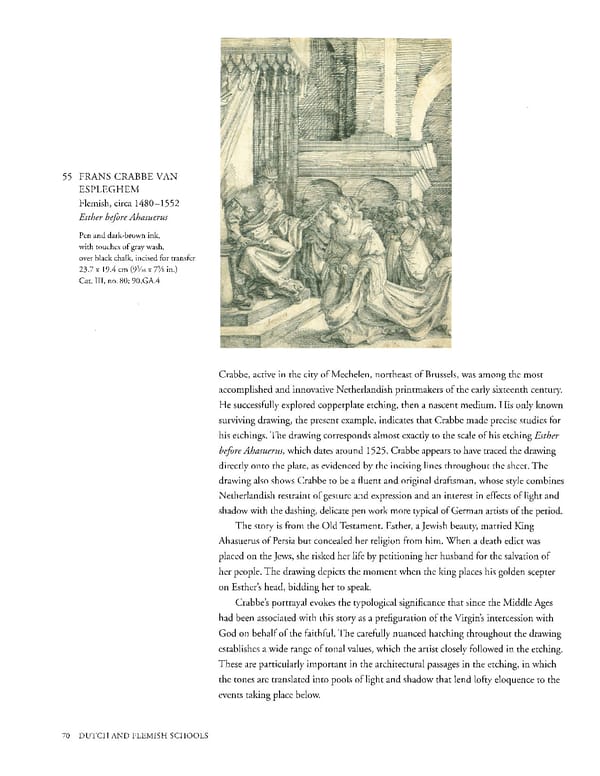55 FRANS CRABBE VAN ESPLEGHEM Flemish, circa 14801552 Esther before Ahasuerus Pen and darkbrown ink, with touches of gray wash, over black chalk, incised for transfer 23.7 x 19.4 cm (9 5/16 x 7 5/8 in.) Cat. Ill, no. 80; 90.GA.4 Crabbe, active in the city of Mechelen, northeast of Brussels, was among the most accomplished and innovative Netherlandish printmakers of the early sixteenth century. He successfully explored copperplate etching, then a nascent medium. His only known surviving drawing, the present example, indicates that Crabbe made precise studies for his etchings. The drawing corresponds almost exactly to the scale of his etching Esther before Ahasuerus, which dates around 1525. Crabbe appears to have traced the drawing directly onto the plate, as evidenced by the incising lines throughout the sheet. The drawing also shows Crabbe to be a fluent and original draftsman, whose style combines Netherlandish restraint of gesture and expression and an interest in effects of light and shadow with the dashing, delicate pen work more typical of German artists of the period. The story is from the Old Testament. Esther, a Jewish beauty, married King Ahasuerus of Persia but concealed her religion from him. When a death edict was placed on the Jews, she risked her life by petitioning her husband for the salvation of her people. The drawing depicts the moment when the king places his golden scepter on Esther's head, bidding her to speak. Crabbe's portrayal evokes the typological significance that since the Middle Ages had been associated with this story as a prefiguration of the Virgin's intercession with God on behalf of the faithful. The carefully nuanced hatching throughout the drawing establishes a wide range of tonal values, which the artist closely followed in the etching. These are particularly important in the architectural passages in the etching, in which the tones are translated into pools of light and shadow that lend lofty eloquence to the events taking place below. 70 DUTCH AND FLEMISH SCHOOLS
 Masterpieces of the Getty Museum: Drawings Page 70 Page 72
Masterpieces of the Getty Museum: Drawings Page 70 Page 72